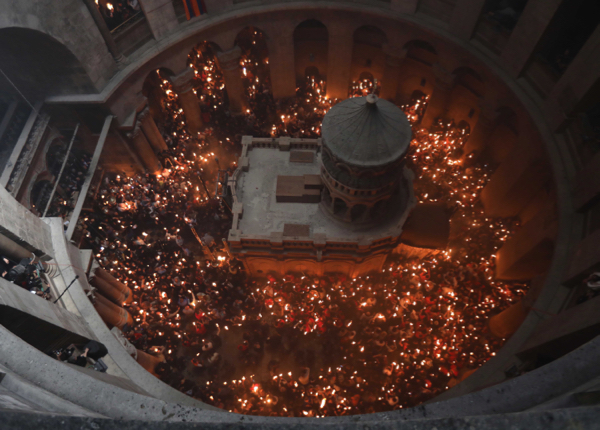Scientific testing on the site of what is believed to be Jesus’ tomb has dated material found there to the time of Rome’s first Christian emperor, Constantine.
Researchers tested mortar taken from between the original limestone surface of a cave, where religious followers say Christ was buried, and a marble slab that covers it. In results revealed to National Geographic, the marble was dated to around 345 AD.
While it is archaeologically impossible to prove the tomb is the burial site of Jesus Christ, who according to New Testament accounts was crucified in Jerusalem in 30 or 33, the new dating results tie in with historical accounts that the emperor Constantine ordered the tomb to be enshrined in a new church as he began the Roman empire’s transition to Christianity in the fourth century AD.
It is the first time such testing has been carried out at the site, located at what is now the Church of the Holy Sepulchre in Jerusalem, and encased in a shrine.
The tests were done in connection with recent restoration work, which saw the tomb opened for the first time in centuries. National Geographic were given exclusive access to the opening of the tomb.
“This is a very important finding because it confirms that it was, as historically evidenced, Constantine the Great responsible for cladding bedrock of the tomb of Christ with the marble slabs in the edicule,” said Antonia Moropoulou, a specialist in preservation from the National Technical University of Athens.
The dating of the mortar shows historical continuity at the site, stretching through the Byzantine era, the Crusades, the Renaissance period and beyond, she said.
In March, the newly restored shrine surrounding the tomb was unveiled following months of delicate work.
The Greek Orthodox, Armenian and Roman Catholic denominations share custody of the church, but disputes between the three had led to renovations being delayed for decades.
PICTURE: Christian Orthodox worshipers hold up candles lit from the "Holy Fire" as thousands gather in the Church of the Holy Sepulchre during the Orthodox Easter ceremonies in Jerusalem's Old City, on April 15, 2017 ©PA



 Loading ...
Loading ...